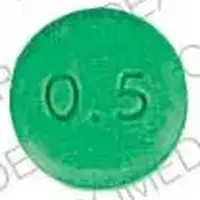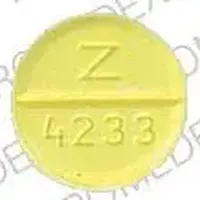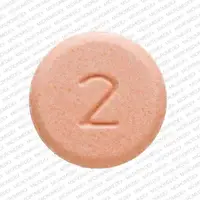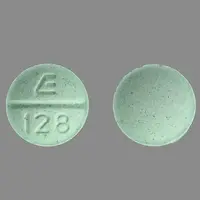Generic name: medically reviewed
Availability: Prescription only
Pregnancy & Lactation: Risk data available
Brand names: Bumex (oral/injection), Bumetanide (oral/injection)
What is Bumetanide (monograph)?
Warning
Special Alerts:
A standardized concentration for this drug has been established through Standardize 4 Safety (S4S), a national patient safety initiative to reduce medication errors, especially during transitions of care. The drug is included in a standard concentration list which may apply to an IV or oral compounded liquid formulation. For additional information, see the ASHP website [Web].
Warning
-
Bumetanide is a potent diuretic which, if given in excessive amounts, can lead to a profound diuresis with water and electrolyte depletion.
-
Careful medical supervision is required; adjust dosage selection and titration according to the individual patient’s needs. (See Dosage and Administration.)
Introduction
A sulfonamide loop-type diuretic and antihypertensive agent.
Uses for Bumetanide
Edema
Management of edema associated with heart failure or hepatic or renal disease (including nephrotic syndrome).
May be effective in some patients whose condition is unresponsive or refractory to other diuretics.
Considered a diuretic of choice for most patients with heart failure.
Most experts state that all patients with symptomatic heart failure who have evidence for, or a history of, fluid retention generally should receive diuretic therapy in conjunction with moderate sodium restriction, an agent to inhibit the renin-angiotensin-aldosterone (RAA) system (e.g., ACE inhibitor, angiotensin II receptor antagonist, angiotensin receptor-neprilysin inhibitor [ARNI]), a β-adrenergic blocking agent (β-blocker), and in selected patients, an aldosterone antagonist.
Short- and long-term management of edema and ascites associated with hepatic disease (e.g., cirrhosis).
Management of postoperative† [off-label] or premenstrual edema† [off-label] and edema associated with disseminated carcinoma† [off-label].
Hypertension
Management of hypertension† [off-label], alone or in combination with other classes of antihypertensive agents.
Not considered a preferred agent for initial management of hypertension according to current evidence-based hypertension guidelines; other agents (i.e., ACE inhibitors, angiotensin II receptor antagonists, calcium-channel blockers, thiazide diuretics) are preferred for initial management.
Some experts state that loop diuretics (e.g., bumetanide, furosemide, torsemide) are preferred over thiazides in patients with moderate to severe chronic kidney disease (CKD) or symptomatic heart failure.
Individualize choice of therapy; consider patient characteristics (e.g., age, ethnicity/race, comorbidities, cardiovascular risk) as well as drug-related factors (e.g., ease of administration, availability, adverse effects, cost).
A 2017 ACC/AHA multidisciplinary hypertension guideline classifies BP in adults into 4 categories: normal, elevated, stage 1 hypertension, and stage 2 hypertension. (See Table 1.)
Source: Whelton PK, Carey RM, Aronow WS et al. 2017 ACC/AHA/AAPA/ABC/ACPM/AGS/APhA/ASH/ASPC/NMA/PCNA guideline for the prevention, detection, evaluation, and management of high blood pressure in adults: a report of the American College of Cardiology/American Heart Association Task Force on Clinical Practice Guidelines. Hypertension. 2018;71:e13-115.
Individuals with SBP and DBP in 2 different categories (e.g., elevated SBP and normal DBP) should be designated as being in the higher BP category (i.e., elevated BP).
|
Category |
SBP (mm Hg) |
DBP (mm Hg) |
|
|---|---|---|---|
|
Normal |
<120 |
and |
<80 |
|
Elevated |
120–129 |
and |
<80 |
|
Hypertension, Stage 1 |
130–139 |
or |
80–89 |
|
Hypertension, Stage 2 |
≥140 |
or |
≥90 |
The goal of hypertension management and prevention is to achieve and maintain optimal control of BP. However, the BP thresholds used to define hypertension, the optimum BP threshold at which to initiate antihypertensive drug therapy, and the ideal target BP values remain controversial.
The 2017 ACC/AHA hypertension guideline generally recommends a target BP goal (i.e., BP to achieve with drug therapy and/or nonpharmacologic intervention) of <130/80 mm Hg in all adults regardless of comorbidities or level of atherosclerotic cardiovascular disease (ASCVD) risk. In addition, an SBP goal of <130 mm Hg generally is recommended for noninstitutionalized ambulatory patients ≥65 years of age with an average SBP of ≥130 mm Hg. These BP goals are based upon clinical studies demonstrating continuing reduction of cardiovascular risk at progressively lower levels of SBP.
Other hypertension guidelines generally have based target BP goals on age and comorbidities. Guidelines such as those issued by the JNC 8 expert panel generally have targeted a BP goal of <140/90 mm Hg regardless of cardiovascular risk, and have used higher BP thresholds and target BPs in elderly patients compared with those recommended by the 2017 ACC/AHA hypertension guideline.
Some clinicians continue to support previous target BPs recommended by JNC 8 due to concerns about the lack of generalizability of data from some clinical trials (e.g., SPRINT study) used to support the 2017 ACC/AHA hypertension guideline and potential harms (e.g., adverse drug effects, costs of therapy) versus benefits of BP lowering in patients at lower risk of cardiovascular disease.
Consider potential benefits of hypertension management and drug cost, adverse effects, and risks associated with the use of multiple antihypertensive drugs when deciding a patient's BP treatment goal.
For decisions regarding when to initiate drug therapy (BP threshold), the 2017 ACC/AHA hypertension guideline incorporates underlying cardiovascular risk factors. ASCVD risk assessment is recommended by ACC/AHA for all adults with hypertension.
ACC/AHA currently recommend initiation of antihypertensive drug therapy in addition to lifestyle/behavioral modifications at an SBP ≥140 mm Hg or DBP ≥90 mm Hg in adults who have no history of cardiovascular disease (i.e., primary prevention) and a low ASCVD risk (10-year risk <10%).
For secondary prevention in adults with known cardiovascular disease or for primary prevention in those at higher risk for ASCVD (10-year risk ≥10%), ACC/AHA recommend initiation of antihypertensive drug therapy at an average SBP ≥130 mm Hg or an average DBP ≥80 mm Hg.
Adults with hypertension and diabetes mellitus, CKD, or age ≥65 years are assumed to be at high risk for cardiovascular disease; ACC/AHA state that such patients should have antihypertensive drug therapy initiated at a BP ≥130/80 mm Hg. Individualize drug therapy in patients with hypertension and underlying cardiovascular or other risk factors.
In stage 1 hypertension, experts state that it is reasonable to initiate drug therapy using the stepped-care approach in which one drug is initiated and titrated and other drugs are added sequentially to achieve the target BP. Initiation of antihypertensive therapy with 2 first-line agents from different pharmacologic classes recommended in adults with stage 2 hypertension and average BP >20/10 mm Hg above BP goal.
Bumetanide Dosage and Administration
General
-
Excessive fluid and electrolyte loss may be minimized by monitoring the patient carefully and by initiating therapy with small doses, adjusting dosage carefully, and using an intermittent dosage schedule if possible. (See Boxed Warning.)
-
For the management of fluid retention associated with heart failure, experts state that diuretics should be administered at a dosage sufficient to achieve optimal volume status and relieve congestion without inducing excessively rapid reduction in intravascular volume, which could result in hypotension, renal dysfunction, or both.
-
Supplemental therapy with potassium chloride or potassium-sparing diuretics (e.g., spironolactone) may be necessary for the prevention of hypokalemia and/or metabolic alkalosis in some patients.
Monitoring and BP Treatment Goals
-
Monitor BP regularly (i.e., monthly) during therapy and adjust dosage of the antihypertensive drug until BP controlled.
-
If unacceptable adverse effects occur, discontinue drug and initiate another antihypertensive agent from a different pharmacologic class.
-
Assess patient's renal function and electrolytes 2–4 weeks after initiation of diuretic therapy.
-
If adequate BP response not achieved with a single antihypertensive agent, either increase dosage of single drug or add a second drug with demonstrated benefit and preferably a complementary mechanism of action (e.g., ACE inhibitor, angiotensin II receptor antagonist, calcium-channel blocker). Many patients will require ≥2 drugs from different pharmacologic classes to achieve BP goal; if goal BP still not achieved with 2 antihypertensive agents, add a third drug.
Administration
Administer orally, IV, or IM.
Oral Administration
Administer orally as a single daily dose in the morning. May be preferable to administer single daily dose in the evening for a greater diuretic effect. May administer on alternate days or on 3 or 4 consecutive days alternating with drug-free periods of 1 or 2 days.
For optimum therapeutic effect in some patients, may administer twice daily (morning and evening).
Food may delay absorption.
IV or IM Administration
For solution and drug compatibility information, see Compatibility under Stability.
IV or IM administration may be used in patients unable to take oral medication or who have impaired GI absorption; resume oral administration as soon as possible.
Rate of Administration
For direct IV injection, administer slowly over a period of 1–2 minutes.
Dilution
For IV infusion, dilute in 5% dextrose, 0.9% sodium chloride, or lactated Ringer’s injection; use solutions within 24 hours.
Dosage
Individualize dosage according to individual requirements and response.
Since the diuretic response following oral or parenteral administration is similar, dosage for oral, IV, or IM administration is identical.
Manufacturer states that bumetanide may be substituted for furosemide in furosemide-allergic patients at approximately a 1:40 ratio (cross-sensitivity between the drugs does not appear to occur). (See Sensitivity Reactions under Cautions.)
Pediatric Patients
Heart Failure† [off-label]
IV
Safety and efficacy not established.
0.015 mg/kg on alternate days to 0.1 mg/kg daily has been used in a limited number of children with heart failure†.
In infants 4 days to 6 months of age, maximal diuretic effect was observed at a dosage of 0.035–0.04 mg/kg.
Adults
Edema
Oral
Initially, 0.5–2 mg daily. Repeat dose at 4- to 5-hour intervals until desired response is obtained or maximum dosage of 10 mg daily is reached.
For maintenance therapy, effective dose may be administered intermittently. (See Administration under Dosage and Administration.)
For management of fluid retention associated with heart failure, some experts recommend initiating at a low dosage (e.g., 0.5–1 mg once or twice daily) and increasing dosage (maximum 10 mg daily) until urine output increases and weight decreases, generally by 0.5–1 kg daily.
IV or IM
Initially, 0.5–1 mg. Repeat dose at 2- to 3-hour intervals until desired diuretic response is obtained or a maximum dosage of 10 mg daily is reached.
Hypertension†
Oral
Initially, 0.5 mg daily.
Some experts state that usual dosage range is 0.5–2 mg daily administered in 2 divided doses.
Prescribing Limits
Adults
Edema
Oral
Maximum recommended by manufacturer and some experts: 10 mg daily.
IV or IM
Maximum recommended by manufacturer: 10 mg daily.
Special Populations
Hepatic Impairment
Edema
Use minimum effective dosage; titrate carefully.
Renal Impairment
Edema
Oral or IV
Up to 20 mg daily has been administered. IV doses >2 mg needed to achieve a diuretic response in patients with Clcr <5 mL/minute. High dosages may be needed to produce an adequate diuretic response in patients with severe renal impairment (i.e., GFR <10 mL/minute).
Geriatric Patients
Select dosage with caution because of age-related decreases in hepatic, renal, and/or cardiac function and concomitant disease and drug therapy.
Warnings
Contraindications
-
Anuria.
-
Marked increases in BUN or Scr or development of oliguria during treatment of progressive renal disease.
-
Hepatic coma or severe electrolyte depletion, until condition is improved or corrected.
-
Known hypersensitivity to bumetanide or any ingredient in the formulation.
Warnings/Precautions
Warnings
Fluid, Electrolyte, and Cardiovascular Effects
Careful etiologic diagnosis should precede use of any diuretic. Titrate dosage carefully; excessive dosage, administration frequency, or prolonged therapy may lead to profound water loss, electrolyte depletion, dehydration, reduction in blood volume, and circulatory collapse with the possibility of vascular thrombosis and embolism, especially in geriatric patients. (See Boxed Warning.)
Observe carefully for signs of electrolyte depletion, especially hypokalemia. Excessive fluid and electrolyte loss may be minimized by careful monitoring and initiating therapy with small doses, careful dosage adjustment, and an intermittent dosage schedule if possible.
Hypokalemia may occur; evaluate serum potassium concentration periodically. Hypokalemia is particularly likely and important to prevent in patients with hyperaldosteronism and normal renal function, hepatic cirrhosis and ascites, potassium-losing renal diseases, or certain diarrheal conditions and may require particular attention in patients with heart failure receiving cardiac glycosides and diuretics, those with a history of ventricular arrhythmias, and those with other conditions in which hypokalemia represents a risk. (See Hepatic Impairment under Cautions.)
Periodic determination of other serum electrolyte concentrations recommended for patients receiving high dosages or chronic therapy, especially when sodium intake is restricted. If excessive diuresis and/or electrolyte abnormalities occur, discontinue therapy or reduce dosage until corrected.
Ototoxicity
Produces ototoxicity in animals at high dosages. Serum concentrations associated with ototoxicity in humans unlikely; consider possibility of ototoxicity following IV administration, especially at high dosages, after too rapid administration, in patients with impaired renal function, and/or in patients receiving other ototoxic drugs (e.g., aminoglycosides). (See Specific Drugs under Interactions.)
Thrombocytopenia.
Rare postmarketing experience reports; monitor regularly.
Sensitivity Reactions
Sulfonamides
Patients allergic to sulfonamides may be hypersensitive to bumetanide; use with extreme caution. Does not appear to exhibit cross-sensitivity in patients allergic to furosemide.
General Precautions
Electrolyte Effects
Hypomagnesemia, hypocalcemia, and/or hypophosphatemia may occur.
Endocrine Effects
Possible effects on glucose metabolism should be considered. Changes in plasma insulin, glucagon, or growth hormone concentration or in glucose tolerance or diabetic control generally have not been observed; diuretic-induced hyperglycemia occurs rarely. May result from potassium depletion, which has been associated with impaired insulin secretion.
Other Effects
Blood dyscrasias (especially thrombocytopenia), liver damage, or idiosyncratic reactions have been reported occasionally.
Hyperuricemia may occur; most reported cases have been asymptomatic.
Specific Populations
Pregnancy
Category C.
Lactation
Not known whether bumetanide is distributed into milk. Use not recommended.
Pediatric Use
Safety and efficacy not established in children <18 years of age.
Has been used effectively as a diuretic for up to 40 weeks in a limited number of infants 2 weeks to 7 months of age with congenital heart disease and heart failure†.
Use with caution in critically ill or jaundiced neonates at risk for kernicterus; in vitro studies indicate bumetanide may displace bilirubin from albumin. (See Distribution: Special Populations, under Pharmacokinetics.)
Elimination appears to be slower in neonates than in adults, possibly because of immature renal and hepatobiliary functions. (See Elimination: Special Populations, under Pharmacokinetics.)
Geriatric Use
Response in patients ≥65 years of age does not appear to differ from that in younger adults; however, use with caution due to greater frequency of decreased hepatic, renal, and/or cardiac function and of concomitant disease and drug therapy observed in geriatric patients. (See Fluid, Electrolyte, and Cardiovascular Effects under Cautions.) Monitor renal function.
Hepatic Impairment
Use with caution in patients with hepatic cirrhosis and ascites; sudden alterations in electrolyte balance may precipitate hepatic encephalopathy and coma. Therapy in such patients is best initiated in the hospital with small doses and careful monitoring of clinical status and electrolyte balance. Supplemental potassium and/or concomitant potassium-sparing diuretics (e.g., spironolactone) may be used to prevent hypokalemia and metabolic alkalosis.
Renal Impairment
Patients with renal impairment may require high dosages to achieve an adequate diuretic response. (See Renal Impairment under Dosage and Administration.)
The risk of adverse effects (e.g., ototoxicity) at high dosages should be considered. (See Ototoxicity under Cautions.)
Common Adverse Effects
Muscle cramps, dizziness, hypotension, headache, nausea, encephalopathy, hyperuricemia, hypochloremia, hypokalemia, azotemia, hyponatremia, increased serum creatinine, hyperglycemia.
How should I use Bumetanide (monograph)
General
-
Excessive fluid and electrolyte loss may be minimized by monitoring the patient carefully and by initiating therapy with small doses, adjusting dosage carefully, and using an intermittent dosage schedule if possible. (See Boxed Warning.)
-
For the management of fluid retention associated with heart failure, experts state that diuretics should be administered at a dosage sufficient to achieve optimal volume status and relieve congestion without inducing excessively rapid reduction in intravascular volume, which could result in hypotension, renal dysfunction, or both.
-
Supplemental therapy with potassium chloride or potassium-sparing diuretics (e.g., spironolactone) may be necessary for the prevention of hypokalemia and/or metabolic alkalosis in some patients.
Monitoring and BP Treatment Goals
-
Monitor BP regularly (i.e., monthly) during therapy and adjust dosage of the antihypertensive drug until BP controlled.
-
If unacceptable adverse effects occur, discontinue drug and initiate another antihypertensive agent from a different pharmacologic class.
-
Assess patient's renal function and electrolytes 2–4 weeks after initiation of diuretic therapy.
-
If adequate BP response not achieved with a single antihypertensive agent, either increase dosage of single drug or add a second drug with demonstrated benefit and preferably a complementary mechanism of action (e.g., ACE inhibitor, angiotensin II receptor antagonist, calcium-channel blocker). Many patients will require ≥2 drugs from different pharmacologic classes to achieve BP goal; if goal BP still not achieved with 2 antihypertensive agents, add a third drug.
Administration
Administer orally, IV, or IM.
Oral Administration
Administer orally as a single daily dose in the morning. May be preferable to administer single daily dose in the evening for a greater diuretic effect. May administer on alternate days or on 3 or 4 consecutive days alternating with drug-free periods of 1 or 2 days.
For optimum therapeutic effect in some patients, may administer twice daily (morning and evening).
Food may delay absorption.
IV or IM Administration
For solution and drug compatibility information, see Compatibility under Stability.
IV or IM administration may be used in patients unable to take oral medication or who have impaired GI absorption; resume oral administration as soon as possible.
Rate of Administration
For direct IV injection, administer slowly over a period of 1–2 minutes.
Dilution
For IV infusion, dilute in 5% dextrose, 0.9% sodium chloride, or lactated Ringer’s injection; use solutions within 24 hours.
Dosage
Individualize dosage according to individual requirements and response.
Since the diuretic response following oral or parenteral administration is similar, dosage for oral, IV, or IM administration is identical.
Manufacturer states that bumetanide may be substituted for furosemide in furosemide-allergic patients at approximately a 1:40 ratio (cross-sensitivity between the drugs does not appear to occur). (See Sensitivity Reactions under Cautions.)
Pediatric Patients
Heart Failure† [off-label]
IV
Safety and efficacy not established.
0.015 mg/kg on alternate days to 0.1 mg/kg daily has been used in a limited number of children with heart failure†.
In infants 4 days to 6 months of age, maximal diuretic effect was observed at a dosage of 0.035–0.04 mg/kg.
Adults
Edema
Oral
Initially, 0.5–2 mg daily. Repeat dose at 4- to 5-hour intervals until desired response is obtained or maximum dosage of 10 mg daily is reached.
For maintenance therapy, effective dose may be administered intermittently. (See Administration under Dosage and Administration.)
For management of fluid retention associated with heart failure, some experts recommend initiating at a low dosage (e.g., 0.5–1 mg once or twice daily) and increasing dosage (maximum 10 mg daily) until urine output increases and weight decreases, generally by 0.5–1 kg daily.
IV or IM
Initially, 0.5–1 mg. Repeat dose at 2- to 3-hour intervals until desired diuretic response is obtained or a maximum dosage of 10 mg daily is reached.
Hypertension†
Oral
Initially, 0.5 mg daily.
Some experts state that usual dosage range is 0.5–2 mg daily administered in 2 divided doses.
Prescribing Limits
Adults
Edema
Oral
Maximum recommended by manufacturer and some experts: 10 mg daily.
IV or IM
Maximum recommended by manufacturer: 10 mg daily.
Special Populations
Hepatic Impairment
Edema
Use minimum effective dosage; titrate carefully.
Renal Impairment
Edema
Oral or IV
Up to 20 mg daily has been administered. IV doses >2 mg needed to achieve a diuretic response in patients with Clcr <5 mL/minute. High dosages may be needed to produce an adequate diuretic response in patients with severe renal impairment (i.e., GFR <10 mL/minute).
Geriatric Patients
Select dosage with caution because of age-related decreases in hepatic, renal, and/or cardiac function and concomitant disease and drug therapy.
What other drugs will affect Bumetanide (monograph)?
Specific Drugs
|
Drug |
Interaction |
Comments |
|---|---|---|
|
Anticoagulants, oral (e.g., warfarin) |
Plasma prothrombin activity or warfarin metabolism not affected |
|
|
Antihypertensive agents |
Additive antihypertensive effect |
Reduction in dosage of both drugs may be required. Concomitant therapy generally used to therapeutic advantage; orthostatic hypotension may occur. |
|
Cardiac glycosides (e.g., digoxin) |
Possible electrolyte disturbances (e.g., hypokalemia, hypomagnesemia) may predispose to digitalis toxicity, possibly fatal cardiac arrhythmias Renal excretion and serum digoxin concentrations not affected |
Monitor electrolytes; correct hypokalemia |
|
Diuretics |
Increased diuretic and natriuretic effects |
|
|
Diuretics, potassium- sparing (e.g., amiloride, spironolactone, triamterene) |
Possible reduction in potassium loss |
Concomitant therapy may be used to therapeutic advantage |
|
Indomethacin |
Decreased diuretic and natriuretic effect |
Concomitant therapy not recommended If concomitant therapy is necessary, increased bumetanide dosage may overcome decreased diuretic effect . |
|
Other drugs causing potassium loss (corticosteroids, corticotropin, amphotericin B) |
Additive hypokalemic effects |
Monitor electrolytes; correct hypokalemia |
|
Lithium |
Reduced renal clearance of lithium and increased risk of lithium toxicity |
Concomitant use generally contraindicated; if concomitant therapy is necessary, monitor serum lithium concentrations and adjust dosage |
|
Nondepolarizing neuromuscular blocking agents (e.g., atracurium besylate, tubocurarine chloride) |
Potential for prolonged neuromuscular blockade, possibly due to potassium depletion and/or decreased urinary excretion of neuromuscular blocking agent |
Clinical importance unknown; use with caution |
|
Nephrotoxic drugs |
Possible increased nephrotoxic effects; no clinical experience to date |
Avoid concomitant use |
|
Ototoxic drugs (e.g., aminoglycoside antibiotics, cisplatin) |
Possible additive ototoxic effect, especially in patients with impaired renal function |
Avoid concomitant parenteral administration of bumetanide and aminoglycoside antibiotics, except in life-threatening conditions |
|
Probenecid |
Decreased diuretic and natriuretic effects, inhibition of bumetanide-induced increase in plasma renin activity |
Avoid concomitant use |







